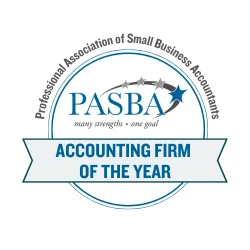Tax estimates are a crucial part of running a small business, helping you prepare for tax obligations and avoid surprises. However, many small business owners find that their estimated tax payments are often inaccurate, leading to unexpected tax bills or overpayments. If you’ve ever wondered why your tax estimates don’t line up with your actual tax liability, you’re not alone.
In this article, we’ll explore the common reasons why tax estimates can be inaccurate, what you can do to improve their accuracy, and where you can find useful resources to stay ahead of your tax obligations.
Your Business Income Fluctuates
Small businesses rarely have a consistent income throughout the year. Seasonal trends, unexpected expenses, or shifts in demand can lead to significant fluctuations in revenue. Many business owners base their tax estimates on past income, which may not reflect the reality of their current financial situation.
To improve accuracy, review your income quarterly and adjust your tax estimates accordingly. Tools like QuickBooks or Xero can help track income trends and project future earnings more effectively. Additionally, consulting resources like the Small Business Administration (SBA) can provide guidance on managing cash flow effectively.
Changes in Tax Laws
Tax laws change frequently at both the federal and state levels. These changes can impact deductions, credits, and tax rates, meaning that estimates based on outdated information may not be accurate.
To stay ahead, regularly check updates from reputable sources including the IRS website . At JR Martin CPA, we keep our clients informed about relevant tax updates to help them stay compliant and optimize their tax strategies.
Overlooking Deductions & Credits
Deductions and credits play a major role in determining your tax liability, but many business owners either forget about them or don’t track them properly. Common deductions such as home office expenses, business vehicle mileage, software subscriptions, employee benefits, and marketing costs can significantly lower taxable income.
To avoid missing deductions, keep detailed records of expenses throughout the year. Using accounting software or working with a tax professional ensures you capture every deductible expense, reducing the risk of overpaying taxes.
Estimated Tax Calculations Based on Last Year’s Data
Many small business owners rely on last year’s tax liability to calculate estimated payments, following the safe harbor rule. While this method helps avoid IRS penalties, it often doesn’t reflect real-time financial changes.
Instead of relying solely on past data, monitor your current income, deductions, and credits throughout the year and make adjustments as needed. To do this effectively, ensure that your bookkeeping is up to date so you have accurate financial records to base your estimates on. This approach leads to more accurate tax estimates and better financial planning.
Payroll Taxes Are Overlooked
For businesses with employees, payroll taxes—such as Social Security, Medicare, and unemployment taxes—must be factored into tax planning. These taxes are often overlooked because they are separate from income tax calculations and require consistent tracking throughout the year. Many business owners either fail to account for the employer portion of payroll taxes or mistakenly assume payroll service providers handle all tax-related responsibilities, leading to underpayments or miscalculations.
Understanding payroll tax responsibilities and setting aside the correct amounts can prevent shortfalls. The IRS Payroll Tax Guide provides essential guidance on managing payroll taxes.
Self-Employment Tax Is Underestimated
Self-employed individuals must pay self-employment tax, which covers Social Security and Medicare contributions. This tax is often underestimated because many business owners fail to realize that they must pay both the employer and employee portion of these taxes, effectively doubling their contribution compared to W-2 employees. Additionally, business owners sometimes miscalculate their net earnings or overlook additional income sources that should be factored into self-employment tax calculations, leading to larger-than-expected tax bills.
To ensure accuracy, include self-employment tax when calculating estimated payments. The IRS Self-Employed Individuals Tax Center offers useful tools to help business owners estimate their tax liability properly.
Expense Projections Are Inaccurate
Many business owners either overestimate or underestimate expenses, making their tax estimates less reliable. This often happens because business owners fail to track ongoing expenses accurately, neglect to update their forecasts as costs fluctuate, or make assumptions based on previous years without considering changes in the market, operational costs, or business growth. Unexpected costs, capital expenditures, or fluctuating operational expenses can distort tax projections.
To maintain accuracy, track expenses carefully using accounting software or professional bookkeeping services and update forecasts throughout the year. Regularly reviewing expense reports and reconciling them with actual expenditures can help identify discrepancies early, preventing large adjustments at tax time. Keeping an organized record of business costs allows for better planning and tax accuracy.
Underpayment Penalties Can Add Up
Failing to pay enough in estimated taxes throughout the year can result in IRS penalties, adding unnecessary costs to your tax burden.
Making quarterly estimated tax payments on time helps ensure compliance and minimizes penalties. Additionally, setting aside a percentage of income for taxes each month provides a buffer against underpayments.
State & Local Taxes Are Forgotten
In addition to federal taxes, business owners must account for state income tax, sales tax, and local business taxes. Unlike federal taxes, these obligations often require separate tracking and reporting, which can be confusing for small business owners. Additionally, sales tax and local business taxes may not be top-of-mind when planning for estimated payments, leading to shortfalls when payments are due.
Checking with your state’s Department of Revenue for tax requirements ensures you meet state and local tax obligations. Many states offer online tools to help businesses estimate their tax liabilities.
Not Working with a Tax Professional
Attempting to estimate taxes without professional help often results in mistakes. Tax professionals can analyze financial data, provide tax-saving strategies, and ensure compliance with all regulations.
Working with a CPA offers peace of mind and better financial outcomes. A good CPA should do more than just file your taxes; they should act as a strategic partner, helping you navigate complex tax laws, identify valuable deductions, and plan for future financial success. Regular check-ins throughout the year allow CPAs to analyze your business trends, update tax estimates, and offer tailored advice to minimize liability. They should also provide clear guidance on record-keeping and compliance to ensure that you are prepared for any tax obligations that arise.
How J.R. Martin CPA Can Help You Get Accurate Tax Estimates
Managing tax estimates can be overwhelming, but you don’t have to do it alone. At J.R. Martin CPA, we work closely with our clients to ensure their tax estimates are as accurate as possible. We meet with business owners to review their financials, analyze income trends, and adjust tax estimates in real time.
By taking a proactive approach, we help you avoid unexpected tax bills, minimize liability, and make informed financial decisions throughout the year. Our expert team ensures you stay compliant and take full advantage of tax-saving opportunities.
If you want personalized tax planning and expert guidance, contact us today to schedule a consultation. We’re here to help your business stay ahead of tax obligations and achieve financial success.
Contact us to get started today!



